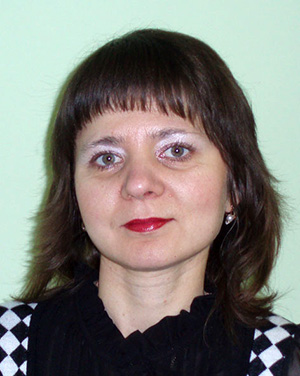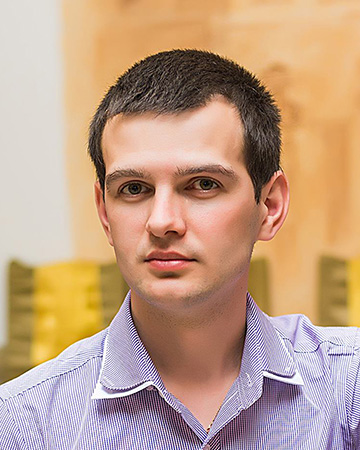|
 UDC 332.12:330.142.21:330.341.1; JEL С00, О18, О31
UDC 332.12:330.142.21:330.341.1; JEL С00, О18, О31
Lutskiv, O. M., Habrel, M. S., & Popadynets, N. M. (2024). Modelyuvannya vplyvu innovatsiynoyi diyal'nosti na produktyvnu spromozhnist' ekonomiky rehioniv Ukrayiny [Modeling the impact of innovation activity on the productive capacity of the economy of Ukrainian regions]. Rehional'na ekonomika - Regional Economy, 111 (1), 16-24. DOI: https://doi.org/10.36818/1562-0905-2024-1-2 [in Ukrainian].
Sources: 10
Authors
Lutskiv Olena MykolayivnaPh.D. of Economics, Senior Researcher
Senior Researcher, Scientific Secretary of the unit of the Department of regional economic policy of the Dolishniy Institute of Regional Research of NAS of Ukraine
Contacts:  lutolen@i.ua, lutolen@i.ua,  (032)270-7089 (032)270-7089
Webpages:         
Habrel Marta StepanivnaPh.D. of Economics
Senior Researcher of the Department of regional economic policy of the Dolishniy Institute of Regional Research of NAS of Ukraine
Contacts:  gab.martina@gmail.com gab.martina@gmail.com
Webpages:    

Popadynets Nazariy MykolayovychDoctor of Economics, Senior Researcher
Senior Researcher of the Department of regional economic policy of the Dolishniy Institute of Regional Research of NAS of Ukraine; Acting Director of the Institute, Professor of the Department of economics and marketing of the Academic Institute of Spatial Planning and Advanced Technologies of Lviv Polytechnic National University
Contacts:  popadynets.n@gmail.com, popadynets.n@gmail.com,  (032)270-7089, (032)270-7089,  (096)945-9098 (096)945-9098
Webpages:          
ResumeActive innovation activity is the key to achieving long-term social and economic development of the country and its regions, which will facilitate the introduction of new technologies and processes that increase productivity and reduce the cost of the economy and ensure the production of new or improved goods and services that are in demand in the market. The article considers the role of innovations in increasing the productive capacity of the economy of Ukrainian regions. Ukraine’s position in the rankings of the Global Innovation Index is assessed. The article analyzes the changes in Ukraine’s ranking across the subindices in the Bloomberg Innovation Index over the past seven years. The article aims to model the impact of innovation activity on the productive capacity of the economy of Ukrainian regions. The authors build a matrix of the level of productivity of innovation activity, which includes key parameters of innovation activity in the context of its six components. Based on the construction of a linear model of 14-factor multiple regression, the relationship between multifactor productivity and innovation activity of regions is assessed, in particular, the degree of influence of innovation activity of enterprises, technological efficiency of production, self-sufficiency in innovative developments, productivity of research and development, innovation cooperation and the level of financing of innovation activity on regional productivity is determined. The modeling results indicate an increase in the trends of the negative impact of innovation on multifactor productivity in 2021 compared to 2013. The article emphasizes that the intensification of innovation processes leads to an increase in the productive capacity of the regional economy up to a certain time, while not all innovation processes have a direct or significant impact on the growth of the multifactor productivity of Ukrainian regions, and some of the considered factors, on the contrary, have the opposite effect on its development since they lead to its reduction. Special attention is paid to the main points of the existing “innovation paradox and productivity”, the essence of which is that the economic development of regions is not always determined and depends on the intensification of innovation processes and the introduction of technological developments. The article shows that the main goal of innovation is to promote productivity growth, but productivity growth is not always observed in the most innovatively developed regions as the direct relationship between innovation and productivity is much more complex and unpredictable. These linkages are not necessarily direct and linear, and in some cases may even be negative, depending on the various constraints that hinder and limit innovation.
Keywords:productive capacity, economic capacity, regions, multifactor productivity, innovative activity, modeling, new technology, innovation paradox
References- Naukova ta innovatsiyna diyal’nist’ v Ukrayini. 2013 [Scientific and innovative activity in Ukraine. 2013]: Statistical publication (2014). Kyiv: State Statistics Service of Ukraine. [in Ukrainian].
- Naukova ta innovatsiyna diyal’nist’ v Ukrayini. 2020 [Scientific and innovative activity in Ukraine. 2020]: Statistical publication (2021). Kyiv: State Statistics Service of Ukraine. [in Ukrainian].
- State Statistics Service of Ukraine: Website (2023). Retrieved from https://www.ukrstat.gov.ua [in Ukrainian].
- Innovation (2022). OECD: Website. Retrieved from https://www.oecd.org/innovation
- Global Innovation Index (2021) WIPO: Website. Retrieved from https://www.wipo.int/global_innovation_index/en/2021
- Global Innovation Index (2022). WIPO: Website. Retrieved from https://www.wipo.int/global_innovation_index/en/2022
- Global Innovation Index (2023). WIPO: Website. Retrieved from https://www.wipo.int/global_innovation_index/en/2023
- Most Innovative Countries (2023). World Population Review: Website. Retrieved from https://worldpopulationreview.com/country-rankings/most-innovative-countries
- Hans-Olof, H., Glantz, J., & Nilsson, M. (2008). ICT use, broadband and productivity. Retrieved from https://mdgs.un.org/unsd/economic_stat/ICT-Korea/Documents/hagen_sweden.pdf
- Fragkandreas, T. (2021). Innovation-productivity paradox: іmplications for regional policy. OECD. Retrieved from https://www.oecd.org/regional/W1-S2-Thanos-Fragkandreas.pdf
|